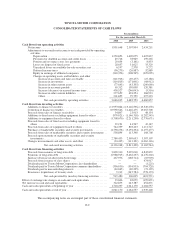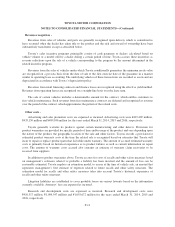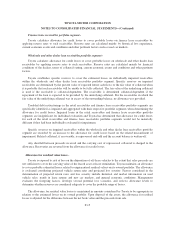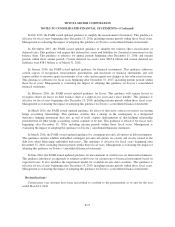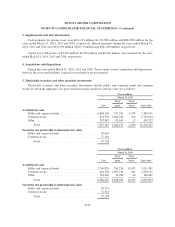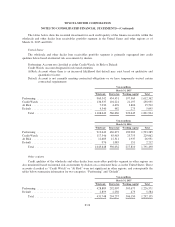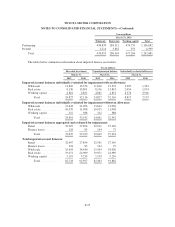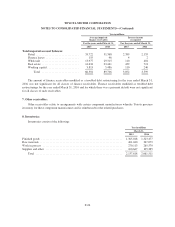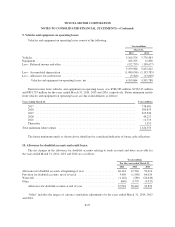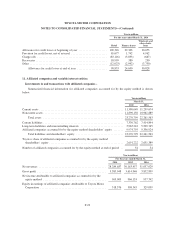Toyota 2015 Annual Report Download - page 160
Download and view the complete annual report
Please find page 160 of the 2015 Toyota annual report below. You can navigate through the pages in the report by either clicking on the pages listed below, or by using the keyword search tool below to find specific information within the annual report.TOYOTA MOTOR CORPORATION
NOTES TO CONSOLIDATED FINANCIAL STATEMENTS—(Continued)
In July 2015, the FASB issued updated guidance to simplify the measurement of inventory. This guidance is
effective for fiscal years beginning after December 15, 2016, including interim periods within those fiscal years.
Management is evaluating the impact of adopting this guidance on Toyota’s consolidated financial statements.
In November 2015, the FASB issued updated guidance to simplify the balance sheet classification of
deferred taxes. This guidance will require that deferred tax assets and liabilities be classified as noncurrent on the
balance sheet. This guidance is effective for annual periods beginning after December 15, 2016, and interim
periods within those annual periods. Current deferred tax assets were ¥967.6 billion and current deferred tax
liabilities were ¥28.1 billion, as of March 31, 2016.
In January 2016, the FASB issued updated guidance for financial instruments. This guidance addresses
certain aspects of recognition, measurement, presentation, and disclosure of financial instruments and will
require entities to measure equity investments at fair value and recognize any changes in fair value in net income.
This guidance is effective for fiscal years beginning after December 15, 2017, including interim periods within
those fiscal years. Management is evaluating the impact of adopting this guidance on Toyota’s consolidated
financial statements.
In February 2016, the FASB issued updated guidance for leases. This guidance will require lessees to
recognize almost all leases on their balance sheet as a right-of-use asset and a lease liability. This guidance is
effective for fiscal years beginning after December 15, 2018, including interim periods within those fiscal years.
Management is evaluating the impact of adopting this guidance on Toyota’s consolidated financial statements.
In March 2016, the FASB issued updated guidance for effect of derivative contract novations on existing
hedge accounting relationships. This guidance clarifies that a change in the counterparty to a designated
derivative hedging instrument does not, in and of itself, require dedesignation of that hedging relationship
provided that all other hedge accounting criteria continue to be met. This guidance is effective for fiscal years
beginning after December 15, 2016, including interim periods within those fiscal years. Management is
evaluating the impact of adopting this guidance on Toyota’s consolidated financial statements.
In March 2016, the FASB issued updated guidance for contingent put and call options in debt instruments.
This guidance clarifies whether embedded contingent put and call options are clearly and closely related to the
debt host when bifurcating embedded derivatives. This guidance is effective for fiscal years beginning after
December 15, 2016, including interim periods within those fiscal years. Management is evaluating the impact of
adopting this guidance on Toyota’s consolidated financial statements.
In June 2016, the FASB issued updated guidance for measurement of credit losses on financial instruments.
This guidance introduces an approach to estimate credit losses on certain types of financial instruments based on
expected losses. It also modifies the impairment model for available-for-sale debt securities. This guidance is
effective for fiscal years beginning after December 15, 2019, including interim periods within those fiscal years.
Management is evaluating the impact of adopting this guidance on Toyota’s consolidated financial statements.
Reclassifications -
Certain prior year amounts have been reclassified to conform to the presentations as of and for the year
ended March 31, 2016.
F-19


